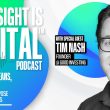What Happened Last Week-- Ending May 29:
Last week, the S&P 500 index reached the psychologically important 3000 level, breaking a technically important barrier which forced many skeptics to cover their short positions, algorithms and CTAs to amplify the trend. The index closed at 3043, on Friday for a weekly gain of 3.0%. Interestingly, the broad market recovery was powered by a rotation away from expensive slow-inflation and secular growth stocks (Health, Gold Tech,) in favour of inexpensive cyclical stocks (financials, materials, energy, industrials). Although the nascent pro-cyclical shift might be fleeting, it’s a promising development because it is an essential process to sustain the bull run. Usually, it's the cyclical names that front run a stock market recovery and it typically starts with banks. I do not think that the violent rotation is just another cheap short term trade. What we had was a contradiction. Growth was the defensive area because it was the only place where there was any economic activity whereas common business was blunt out of activity. Growth was therefore handsomely rewarded. Now, we are getting the flip side because people want to go back to normal lives. As the death toll and number of cases decrease, the voters will demand a reopening under easier restrictions. This abrupt change in zeitgeist, came at a time when CTAs were caught short and traders and speculators had underweighted positions.
Nevertheless, the rebound slowed in the latter days of the week as racial tension in the U.S. and HK tensions in China stole the spotlight. Despite all the hou-ha surrounding these two events, the market did not take them too badly.
Firstly, President Trump signed an executive order, possibly unconstitutional and unclear if it's enforceable, limiting legal protections that social media companies enjoy. It will certainly be challenged in the courts. I don't think that the executive order will deliver the intended punch other than draw more futile attacks across the political spectrum and further divide what is already a political split. Regulating online speech that would aim for neutrality is ridiculous.It would be imprecise, cloudy and ambiguous and in turn a fool’s errand. The thing is that it is up to the users of social media to make up their mind.
Secondly, the downward spiral between China and the U.S. relations has no end. Generally speaking investors are not happy about this. Each time there is spat, the stock market reacts negatively with a rise in the exchange value of the U.S. dollar. But not this time. The greenback continued to shift out of its two week trading range. At the close on Friday, the DXY registered a recent low of 98.10 and the Renminbi is held steady around 7.14 per US dollar. Investors did not seem to care enough to seesaw the market. Perhaps, sanctions like visa restrictions, asset freezes or trade measures have been on the expectation list for too long to matter. President Trump showed more teeth than bite. In any case, Canada, Australia, the U.S. and Britain in a statement of solidarity said that they would be willing to offer visas and/or asylum to Hong Kong people who fear persecution.
The last two days of trading were warnings that the market might be moving way too fast and ahead of itself. However, as SunTrust Banks pointed out, the market always powers ahead for the next three-months, six-months and twelve-months when 90% of the S&P 500 stocks are above their 50-day moving average and that is what we currently have.
What Is Going On: The Market Is Debating Whether the Rotation Is Real.
There are two types of market participant--bulls and bears. Currently the bulls are basing their optimism on the reopening of the economies, the promise of unbridled stimulus from the fiscal and monetary authorities, and the ongoing flow of news that drug treatments and vaccines are forthcoming. Meanwhile, the bears follow the pessimistic narrative that a second wave would reinvigorate lockdown clamor, the push for an on-shore supply chain would be costly, the epochal shifts in monetary and fiscal policies be too much, the new debt load will have to be funded with higher taxes on income and wealth, and consumer habits have been permanently been altered.
Interestingly, the S&P 500 rally has essentially excluded most institutional investors, allowing traders and speculators to run with it. Although there are hidden vulnerabilities, many see stocks as very attractively priced when compared with bonds. The implied equity risk premium--the expected return of stocks over bonds is high. As a matter of fact, the ratio of stock-dividend yield to bond yield (even with all the dividend cuts) is at a record high.
The wisdom of the massive cohort of traders and speculators might prove to be better at judging what makes a market tick than the professional equity managers who rely on statistical relationships to make investment decisions. The pandemic has not been kind to correlation models. The pandemic showed that sophisticated equity managers are just as human as the rest of us. The point is that pricing models don't work well when forced disruptions and dislocations are of much greater significance than normal cyclical imbalances, when liquidity injections are more consequential than the destruction of earnings and fiscal stimulants are larger than the income elimination.
The market was cheering signs of economic activity resuming faster than many had expected across the U.S. and the rest of the world. Restaurant, hotel and airline bookings are picking up, young entrepreneurs are applying to open new businesses, mortgage applications for house purchases have fully recovered, hitting a multi-year high, purchases of newly built single-family homes are increasing, car-traffic is rising and truck-loads and rail freight shipments are growing. Weekly data on steel production, electricity consumption and petroleum usage have bottomed and have started to rise. The Richmond Fed’s manufacturing index rose sharply from the April low.
It would appear that the worst is over as the aforementioned signs show all the sectors of the economy creeping back to life and many businesses repairing kinks in their supply chains. The recovery is on. Many people are eager to resume their normal lives. U.S. consumer confidence is holding as households are more optimistic about future economic conditions. Given the employment situation, Cornerstone’s daily sentiment index is elevated sitting above 100 points, possibly marking an inflection point. During the financial crisis it hovered around 50. As the perception grows that less and less people are likely to become a covid-19 case, many more people will join the optimistic ranks. The pace of Covid-19 testing keeps on improving--500,000 on May 27 compared to none on March 11. A dramatic increase in testing and contact tracing has become a certainty.
Of course, there is a limit to how high the traders and the speculators can take the market. According to several surveys, the new retail crapshooters are running out of dedicated cash. Hereon, the pro-equity managers will have to carry the money ball further if the S&P 500 is to go back to the peak point registered last February. In other words, they will have to be on board thoroughly with this rally. Otherwise, the predictable debt-to equity swap and a decrease in the personal saving levels, will constrain flows into the equity markets.
First, companies are focusing on maximizing cash flows and reducing balance sheet leverage. So far, the Fed has managed to keep the door open for corporate borrowers. U.S. corporate bond issuance from investment-grade companies totalled more than $1.0 trillion in the first five months of the year in order to pay back emergency credit lines, replenish their cash piles or build a war chest. However, the assistance won’t last much longer as the recovery picks up steam. Investment bankers like the BofA expect a slowdown in bond financing. Indeed, spreads between corporate stock and bond yields have sufficiently narrowed and valuation metrics have risen enough to replace bond issuance with a deluge of equity issuance and reductions in buy-backs.
Second, as coronavirus fears recede households will likely use their huge cash pile for other purposes than building bank balances and paying down debt. Assets in money market funds, which are effectively saving accounts, have reached a record $5 trillion, having seen $1.5 trillion inflows the past 10 weeks. Meanwhile M2, a broad measure of bank deposits and currency in circulation, is $1.6 trillion higher than it was a year ago. These cash balances are unimpaired collateral that have been used by bored stay-at-home people to play the stock market as day traders for entertainment. It’s been reported that hundreds of thousands of new small accounts have been opened with E-trading brokers and millions of existing ones were beefed up. It may not be a long lasting phenomeum. During the month of April, non-taxable transfer receipts from the government totalled $6291.0 trillion (saar) accounting for 34% of personal disposable income (PDI) while households added $6.149.0 trillion (saar) to their personal savings representing 33% of PDI. I know that I’m making a rough calculation and a loose assumption, but it looks like most of the generosity of the government ended up in the savings accounts of consumers. These latter numbers are abnormally high and cannot last.
Based on the hypothesis that retail investors were one of the drivers behind the bounce in stock prices and the probability that we may get a corporate debt-to-equity swap, the professional equity managers will have to step up to fill the gap. I expect that will happen because equity managers are at heart value style investors. Both top-down and bottom-up searchers have had difficulty with performance and have done badly for several years. Consequently, the valuation gap between cyclical and growth is at an extreme level and the pandemic has made it worse. Bloomberg’s John Authers made the suggestion that we might have had a reversal of fortune in the last two weeks. Since May15, U.S. value stocks have enjoyed a return to favour. Why? Bank stocks are value propositions “par excellence”. Hurt with loan write-offs, narrow yield spreads and reduced businesses, the banking sector is the comeback kid. Coronavirus and China permitting, confidence will improve, commodity prices will rise, business activity will increase and the yield curve will steepen. Cyclicals won't look so risky. Based on the notion that a rotation away from the heavily-weighted growth sectors (Tech, Consumer Discretionary, Health) to the lighter-weighted cyclical ones (materials, energy, industrials, banks and utilities) is a very possible outcome.There should be more stock advances than declines. Nevertheless, I’m predicting a narrow trading range for the S&P 500 to 2925 to 3125 because I suspect that most of the market actions will be concentrated in cyclical names which have lesser weight than the big tech stocks. Despite the predictable collapse in earnings, the price-liquidity ratio which plots the market cap of the S&P 500 versus the total money supply should offer protection to the bull’s case.
Copyright © Palos Management














